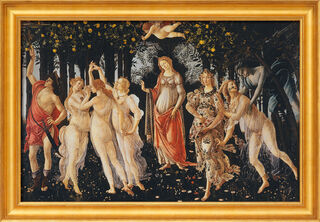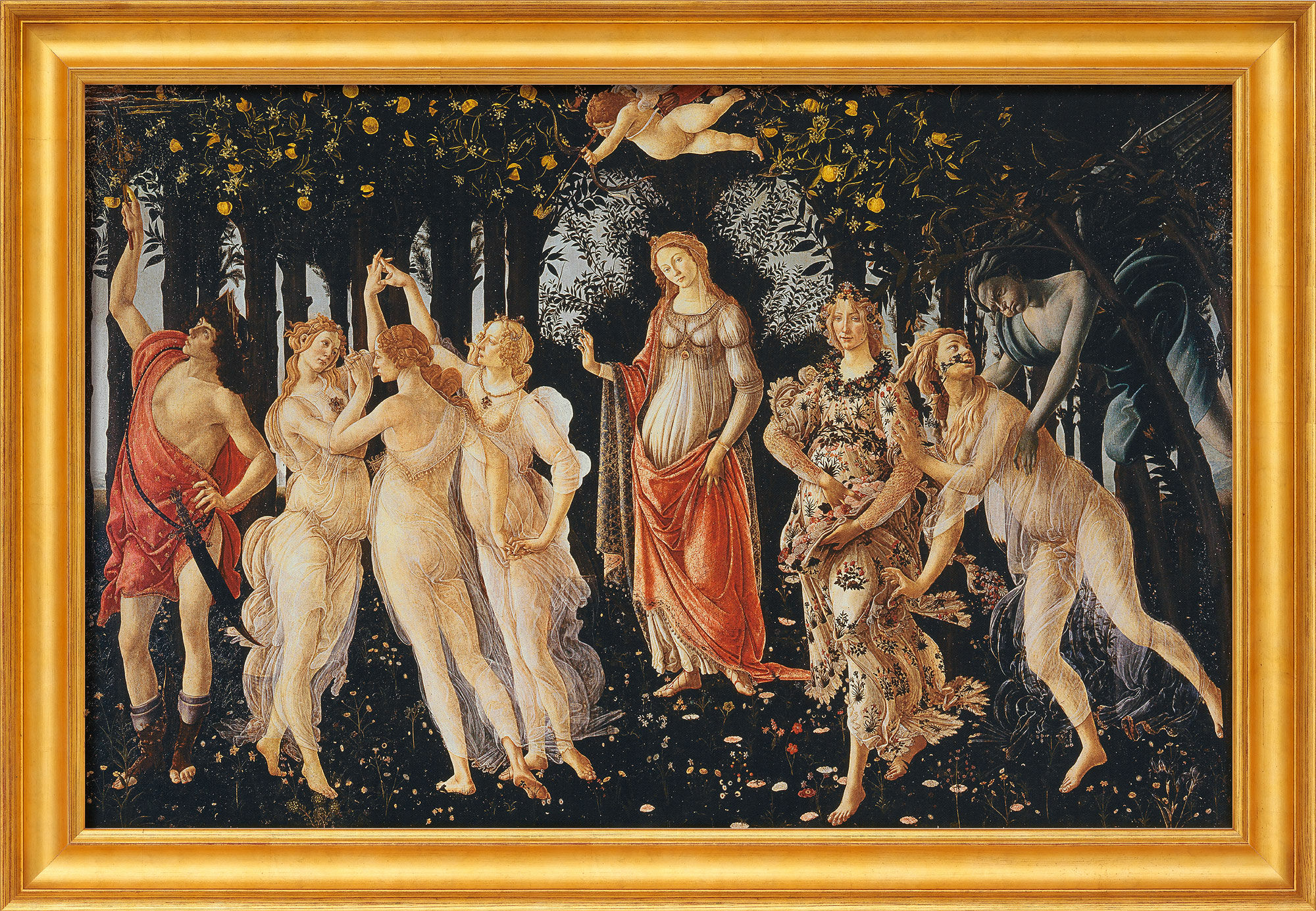Picture "Spring (Primavera)" (1477), framed


Picture "Spring (Primavera)" (1477), framed
Quick info
ars mundi Exclusive Edition | limited, 499 copies | numbered | certificate | Reproduction, Giclée print on canvas | on stretcher frame | framed | size 56 x 80 cm (h/w)
Video
Detailed description
Picture "Spring (Primavera)" (1477), framed
The three Graces form a spring sequence in Botticelli's famous large-format painting against the background of a lush orange grove. A true symbol of grace and beauty. The Renaissance artist's anatomically precise studies of the body reflect the interest in human beings and science throughout Italian society.
Original: Tempera on wood, 203 x 314 cm, Galleria degli Uffizi, Florence.
Brilliant Reproduced using the Fine Art Giclée process on artist's canvas, mounted on a stretcher frame. Limited edition of 499 copies, numbered on the back and with certificate. Framed in a handmade, golden solid wood frame. Size 56 x 80 cm (h/w). Exclusively at ars mundi.
Frame configurator
Customised picture frame

Frame configurator
Customised picture frame






Customer reviews
Frame variant: framed
About Sandro Botticelli
1445-1510
Born in 1445 as the son of a tanner, Alessandro de Mariano Filipepi, known as Botticelli, rose to become one of the Medici's most sought-after artists at a young age. The nickname Botticello means "the little barrel". He became one of the great representatives of the early Renaissance.
As a portrait artist, he depicted the most famous Florentine nobles, leaving a lasting mark on the image of the time of Lorenzo the Magnificent. As a painter of religious subjects, he left behind a wide-ranging oeuvre. But above all, he was groundbreaking in his incorporation of allegorical elements into art and introducing his new form of representation of female portraiture, the most famous of which - the "Idealised Portrait of a Lady" - has been the cause of much speculation for centuries. Yet some of the female figures in Sandro Botticelli's work were inspired by the same real model: Simonetta Vespucci, the ideal of beauty of her time. The allusions are unmistakable in the "Idealised Portrait of a Lady", but some people also believe to recognise her features in the painting "The Birth of Venus".
Graphic or sculpture edition that was initiated by ars mundi and is available only at ars mundi or at distribution partners licensed by ars mundi.
Giclée = derived from the French verb gicler "to squirt, spurt".
The giclée method is a digital printing process. It is a high-resolution, large-format printout on an inkjet printer with special different-coloured dye- or pigment-based inks (usually six to twelve). The colours are fade-proof, i.e. resistant to harmful UV light. They have a high richness of nuance, contrast and saturation.
The giclée process is suitable for art canvases, handmade and watercolour paper as well as for silk.
(Rebirth). The term describing art from around 1350 until the 16th century.
A mindset that developed in Florence in the late 14th century that was retrospectively classified as rebirth of the classical ideals of Greek and Roman antiquity. During the 15th and 16th centuries, the Renaissance spread first over Italy and then all over Western Europe and determined the entire artistic creation. Brilliant artists such as Donatello, Leonardo da Vinci, Michelangelo, Raphael, Dürer, Holbein, Cranach and Fouquet created their immortal works by following the humanistic premises and placing the human being in the centre of all thinking.
Renaissance experienced its heyday in literature through dramatic works and poems of William Shakespeare.
At the end of the 16th century, the Renaissance had to give way to the opulence of baroque, before its ideas experienced a rebirth in the classicism of the 18th century.






